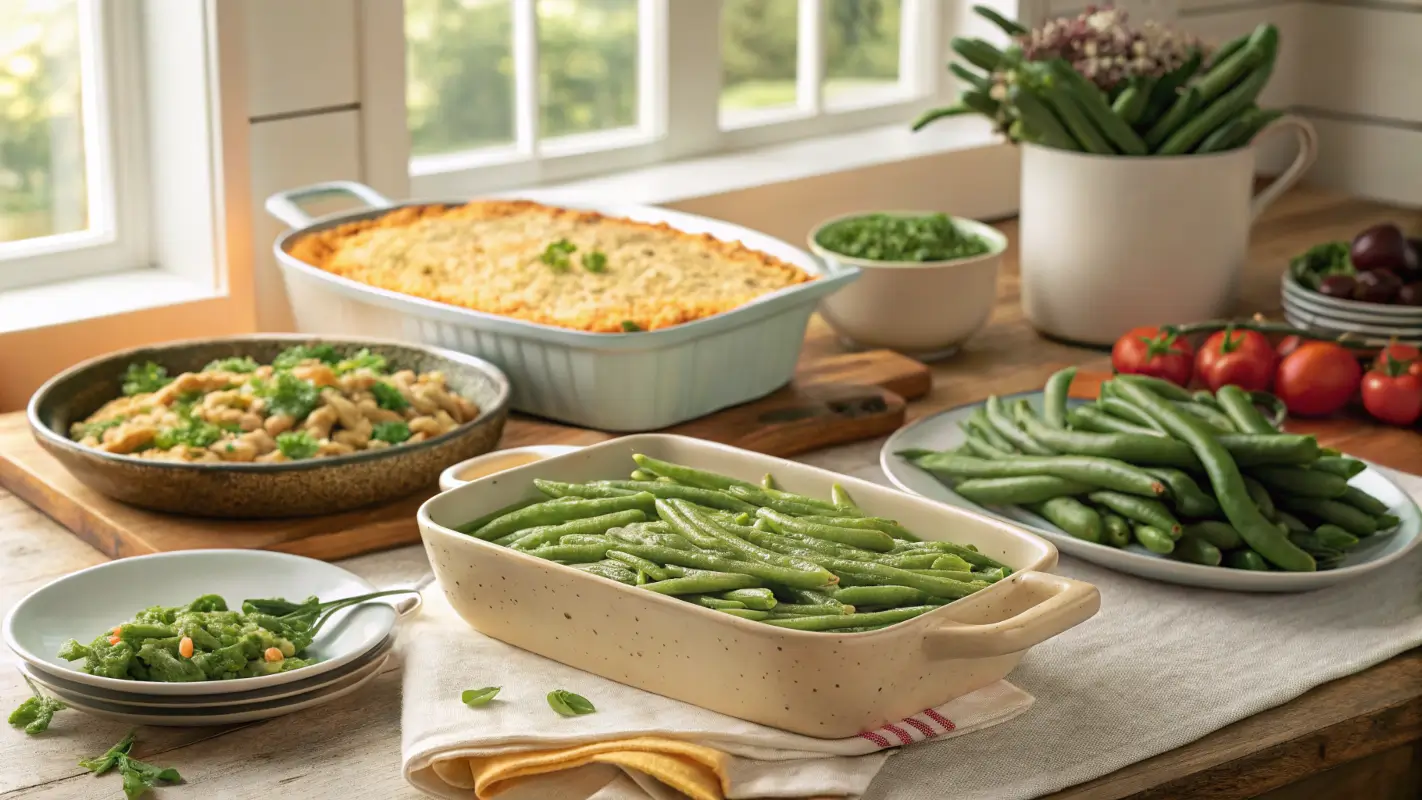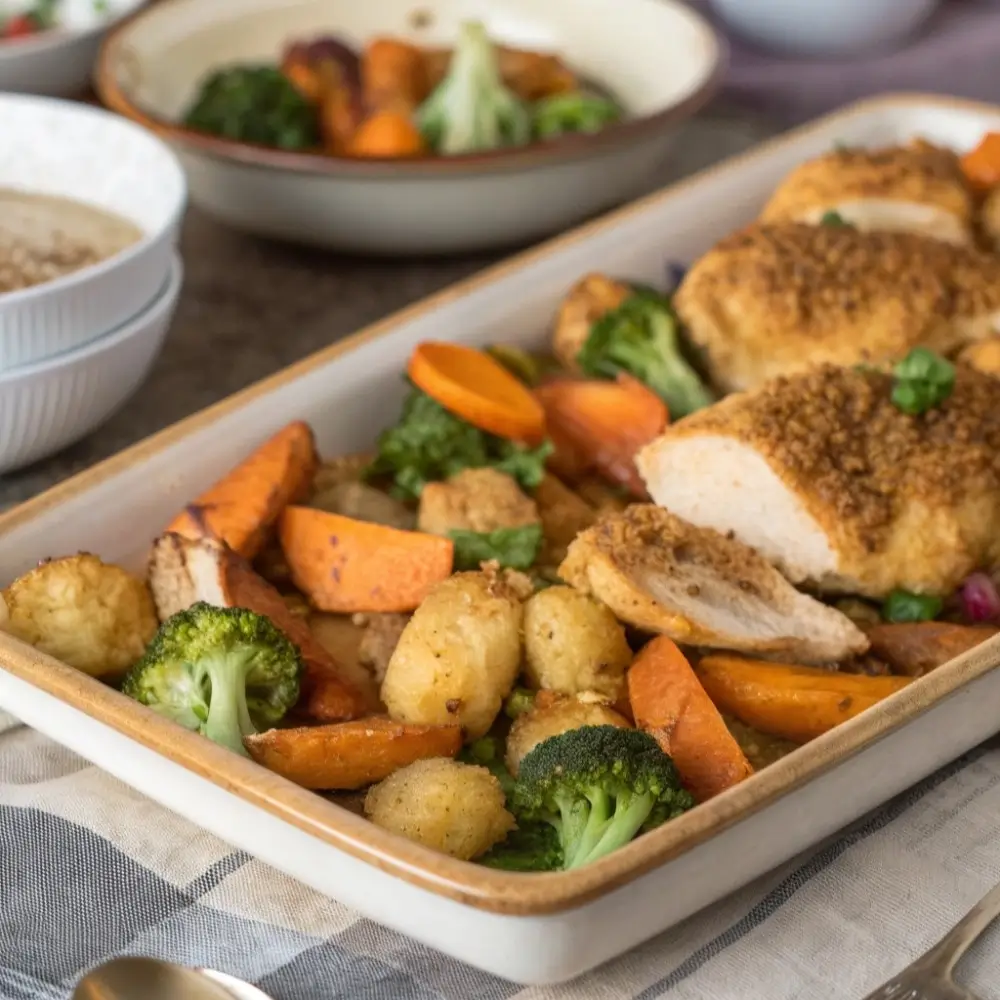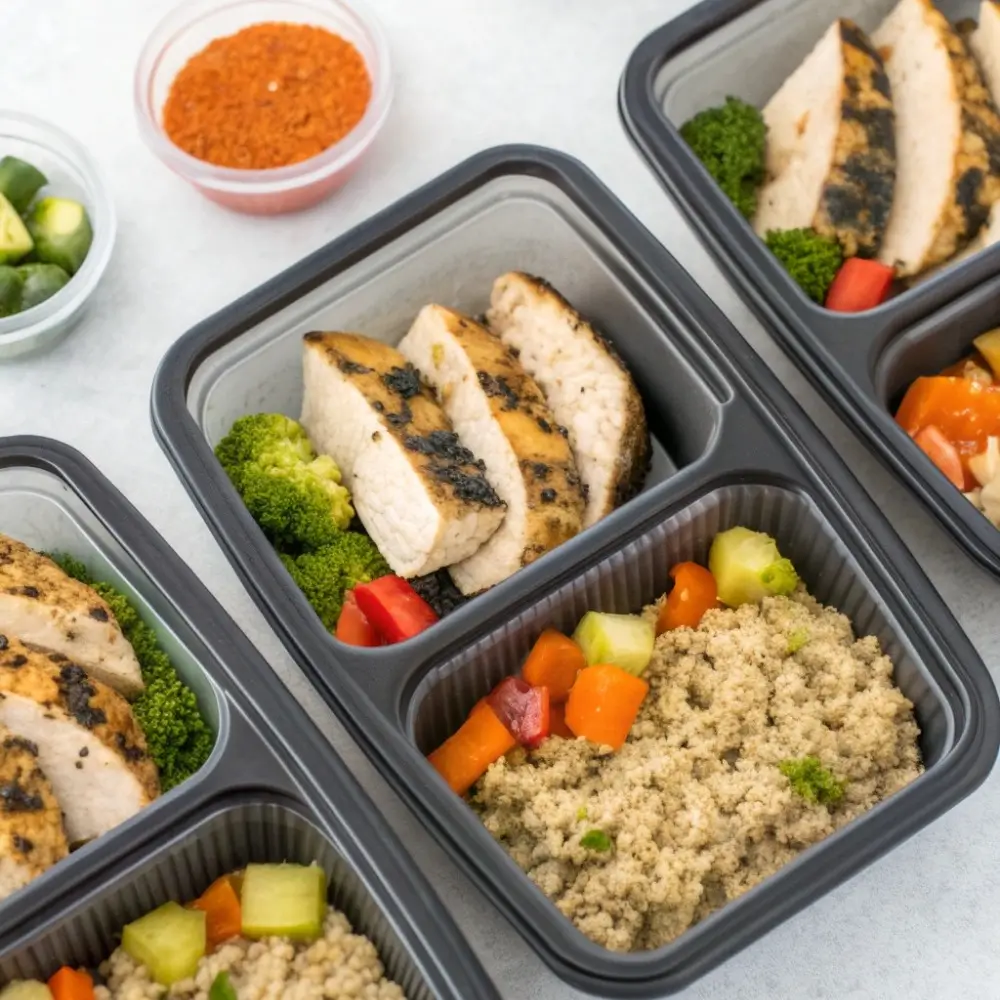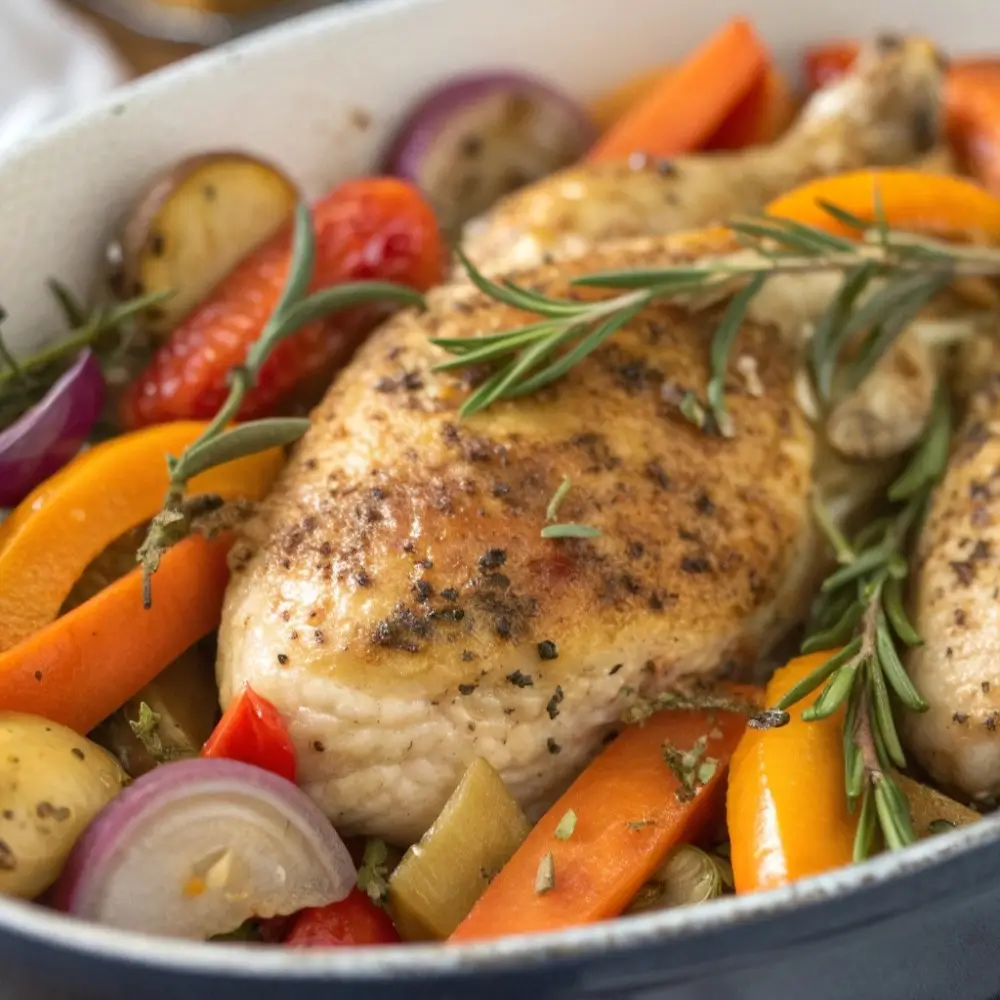Table of Contents
Frozen green beans are a pantry staple in many homes because they are affordable, convenient, and can be prepared in various ways. Whether you’re looking to whip up a quick side dish or incorporate them into a hearty casserole, frozen green beans offer endless possibilities. This article explores a variety of frozen green bean recipes, from sautéed dishes to casseroles, and offers tips on how to make the most of these versatile veggies. Let’s dive into the world of frozen green beans and discover how to bring flavor and nutrition to your meals with ease.
Introduction to Frozen Green Beans
Why Use Frozen Green Beans?
Frozen green beans are more than just a quick fix for busy weeknight dinners—they’re a game changer for anyone looking to add some green to their plates without the hassle of fresh beans. Frozen green beans have a ton of advantages over their fresh counterparts. They’re convenient, long-lasting, and often more affordable. Plus, they retain most of their nutrients, making them just as healthy as fresh beans when properly stored and cooked.
Convenience at Its Best
If you’ve ever found yourself too busy to deal with washing and trimming fresh beans, frozen green beans are your best friend. They’re pre-trimmed and ready to go straight from the freezer to your pan, saving you precious time in the kitchen.
Nutritional Value
You might wonder if frozen green beans have the same health benefits as fresh ones. The good news is they do! In fact, most frozen vegetables, including green beans, are frozen at their peak ripeness, which locks in nutrients. So, whether you’re looking to boost your intake of fiber, vitamin A, or vitamin C, frozen green beans have you covered.
Cost-Effective and Long-Lasting
Another big advantage is the cost. Frozen green beans are often cheaper than fresh, especially if you buy them in bulk. And because they last much longer in the freezer, you can keep them on hand for months without worrying about spoilage.
Ideal for Meal Prep
Frozen green beans are an excellent choice for meal prep, too. They can be cooked in bulk, stored in the fridge, and used throughout the week in various dishes. Whether you prefer them roasted, sautéed, or steamed, frozen green beans are incredibly versatile.
If you’re ready to explore some amazing ways to cook frozen green beans, stick around! We’ll guide you through mouth-watering recipes that are perfect for every meal and occasion.
Essential Ingredients and Equipment
Key Ingredients for Frozen Green Bean Recipes
Frozen green beans are incredibly versatile and can be used in a wide variety of dishes. Whether you’re sautéing, roasting, or making a hearty casserole, the right combination of ingredients can elevate the dish. Let’s explore the essential ingredients you need to prepare tasty frozen green bean recipes.
Frozen Green Beans
When selecting frozen green beans, always choose high-quality ones for the best flavor and texture. Look for beans that are bright green with minimal freezer burn. The best frozen green beans should be flash-frozen at peak freshness, ensuring they retain their nutrients and taste. Look for brands with no added preservatives or sauces.
Aromatics
Aromatics like garlic, onions, and herbs bring depth and richness to your frozen green bean dishes. Fresh garlic adds a lovely bite when sautéed, while onions give a sweet, savory note. Experiment with herbs such as thyme, rosemary, or basil to add a fragrant twist that complements the beans beautifully.
Seasonings and Sauces
Seasonings and sauces are key to transforming simple frozen green beans into flavorful dishes. A pinch of salt and pepper is a must, but feel free to explore other spices like paprika, garlic powder, or crushed red pepper flakes. Soy sauce, balsamic vinegar, and even a splash of lemon juice can work wonders to enhance the beans’ flavor profile.
Optional Additions
To make your frozen green bean recipes even more exciting, consider adding optional ingredients like nuts, cheese, or proteins. Toasted almonds or walnuts bring crunch, while grated Parmesan cheese adds richness. You can also add protein sources like grilled chicken or bacon for a more filling meal.
Cooking Fats
The right cooking fat can make all the difference. Butter is a classic choice for adding richness and flavor, but olive oil works wonderfully for a lighter, healthier alternative. Other fats like coconut oil or ghee can also be used depending on your taste preference.
Recommended Kitchen Equipment
Having the right kitchen tools is just as important as having the right ingredients. Let’s take a look at some essential equipment you’ll need to create the perfect frozen green bean dishes.
Cookware
For sautéing, a large, heavy-bottomed skillet or non-stick pan is ideal. For roasting, a rimmed baking sheet or baking dish will allow the beans to cook evenly. Make sure your cookware is large enough to give the green beans room to spread out for optimal crispness.
Utensils
Basic kitchen utensils like tongs, spatulas, and a wooden spoon are essential for stirring, flipping, and serving. A microplane grater is perfect for zesting or grating Parmesan cheese over the beans. Tongs are especially handy when tossing roasted beans or serving sautéed dishes.
Measuring Tools
Accurate measurements are crucial for consistent results. A good set of measuring cups and spoons is essential for measuring spices, sauces, or fats. A kitchen scale can be useful for more precise portions, especially if you’re meal prepping.
Storage Containers
After cooking your frozen green beans, it’s important to store leftovers properly to maintain freshness. Airtight containers are perfect for storing cooked beans in the refrigerator for up to 3-4 days. You can also use freezer bags to store extra cooked beans if you want to enjoy them at a later time.
Explore our Green Bean Recipes Collection for more creative dishes using frozen green beans.
Creative Variations and Pairings
Flavor Enhancements
Frozen green beans are already delicious on their own, but adding some exciting flavors can elevate them to a whole new level. Here are some creative ways to enhance the flavor of your green beans.
Adding Nuts and Dried Fruits
One great way to enhance the flavor and texture of your green beans is by adding nuts and dried fruits. Almonds, walnuts, and pecans can add a satisfying crunch, while dried cranberries or raisins bring a touch of sweetness to balance the savory notes of the beans. Simply sprinkle a handful of your chosen additions over the green beans as they cook or right before serving. You’ll find that the contrast of textures and flavors makes each bite even more enjoyable!
Experimenting with Spices
If you enjoy bold, exciting flavors, consider experimenting with different spices in your green bean recipes. A pinch of cumin can bring a warm, earthy flavor, while paprika adds a smoky depth. For something with a bit of heat, a touch of curry powder can infuse your green beans with a flavorful kick. Don’t be afraid to mix and match, using a combination of these spices to tailor the dish to your personal taste. Try adding them into the cooking oil or seasoning mixture for the best results.
Meal Pairings
Pairing your green beans with the right dishes can make a meal come together beautifully. Here are some great pairing suggestions for both side dishes and main courses.
Complementary Side Dishes
When serving green beans, choose side dishes that complement their light yet savory flavor. Rice is a classic choice that balances the dish’s freshness, while creamy mashed potatoes offer a smooth contrast to the crispness of green beans. If you prefer something lighter, salads with a tangy vinaigrette are an excellent choice to provide a fresh and vibrant contrast. These side dishes will ensure your green beans shine while contributing to a balanced meal.
Main Course Pairings
Green beans can be paired with a variety of main courses to complete your meal. For a hearty dinner, try pairing your green beans with roasted chicken, beef steak, or grilled fish. These proteins complement the mild flavor of the beans while adding richness to the dish. For a vegetarian meal, green beans pair wonderfully with quinoa, lentil stew, or a vegetable stir-fry, creating a fulfilling and nutritious meal.
Storage and Reheating Tips
Proper Storage Techniques
After preparing your delicious frozen green bean recipes, storing them properly ensures that you can enjoy them later. Let’s go over the best ways to store your cooked green beans.
Refrigeration
Once your green beans are cooked, refrigerating them is the easiest and most common storage method. Simply place them in an airtight container and refrigerate for up to 3-4 days. Be sure to let the beans cool completely before transferring them to the container to avoid condensation. If you have leftovers, keep them in the fridge for quick reheating the next day. This method ensures that your green beans retain their flavor and texture for several days.
Freezing
If you want to keep your cooked green beans for an extended period, freezing is an excellent option. First, make sure the green beans are fully cooled. Then, place them in an airtight freezer bag or container. For better results, you can flash freeze them by spreading them in a single layer on a baking sheet for about an hour before transferring them to storage containers. This method prevents the beans from sticking together, allowing for easy portioning. Frozen green beans can be stored for up to 2-3 months.
Reheating Methods
When it comes to reheating your green beans, the method you choose can affect their texture and flavor. Here are the two best ways to bring your frozen or refrigerated green beans back to life.
Stovetop
The stovetop method is ideal for reheating green beans while maintaining their texture and flavor. Place the green beans in a pan over medium heat and add a small amount of oil or butter to prevent them from drying out. Stir occasionally, and heat until they’re warmed through, which should take about 5-7 minutes. If the beans are frozen, you may want to add a splash of water to help them thaw while they cook. This method works best for maintaining a crispy and fresh texture.
Microwave
For a quick and easy reheating option, the microwave can do the trick. Place the green beans in a microwave-safe dish and cover them with a microwave-safe lid or damp paper towel. Heat on high for 1-2 minutes, stirring halfway through. If the beans are frozen, you may need to increase the heating time by 1-2 minutes. Be careful not to overcook the beans, as microwaving for too long can make them soggy.
For more ideas on pairing side dishes, check out Allrecipes Side Dish Pairings.
FAQs On Frozen Green Bean Recipes
Frozen green beans are a versatile ingredient, but you may have a few questions about how to use and store them. Let’s tackle some of the most commonly asked questions regarding frozen green beans.
How Do I Prevent Frozen Green Beans from Becoming Soggy?
Frozen green beans can sometimes turn soggy if not prepared or cooked properly. To maintain their crispness, it’s essential not to overcook them. Whether you’re sautéing or boiling, cook them for the minimum amount of time required. If you’re sautéing, ensure the pan is hot and use a bit of oil or butter for added texture. Also, try to avoid thawing frozen green beans before cooking, as this can release excess moisture. Instead, cook them straight from frozen to help retain their natural texture.
Can I Use Frozen Green Beans in Place of Fresh Ones in Recipes?
Yes, frozen green beans are a fantastic substitute for fresh ones in most recipes. They’re pre-washed, cut, and frozen at peak freshness, so they can be used in casseroles, sautés, soups, and stews without any loss of flavor. If the recipe calls for fresh beans, simply thaw or cook the frozen ones directly, adjusting the cooking time if necessary. Just keep in mind that frozen beans may soften slightly more than fresh ones, so be sure to check for texture and adjust accordingly.
How Long Do Frozen Green Beans Last in the Freezer?
Frozen green beans can last for up to 8-12 months in the freezer if stored properly. Be sure to place them in an airtight container or freezer bag to protect them from freezer burn and preserve their quality. To keep them as fresh as possible, try to use them within 6 months. Over time, they may lose flavor and texture, so it’s always best to consume them sooner rather than later. Always check for signs of freezer burn or discoloration before use.
Can Frozen Green Beans Be Used in Soups and Stews?
Absolutely! Frozen green beans are perfect for adding to soups, stews, and other slow-cooked dishes. Since they are pre-cooked before freezing, they hold up well in long-simmering dishes. You can add them straight from the freezer to your soup or stew during the last 10-15 minutes of cooking, allowing them to heat through without losing their texture. This method is perfect for hearty soups and comforting stews where green beans can soak up the flavors of the broth.





